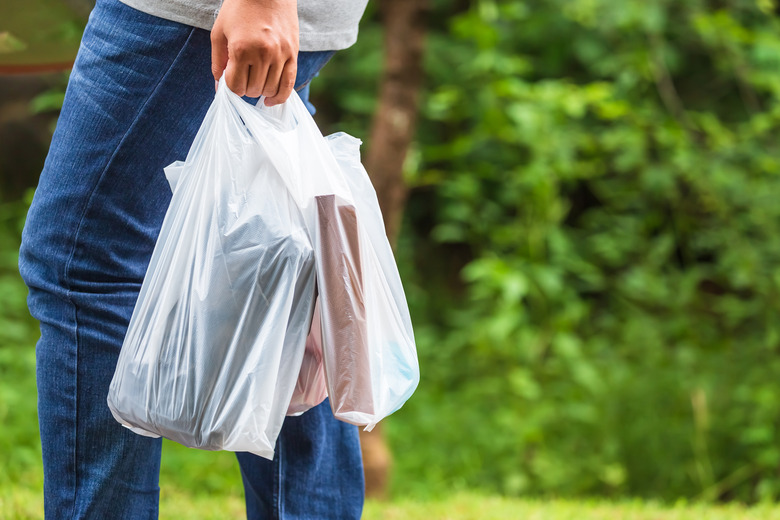How Are Plastic Grocery Bags Made?
Creating the plastic material
Creating the plastic material
Plastic grocery bags are manufactured from ethylene, which is a gas produced from the combustion of coal, oil and petrol.
The gas is processed into polymers, which are chains of ethylene molecules. The resulting high-density compound, called polythene, is compressed into pellets.
The pellets are shipped to plastic manufacturers where they are melted and molded under controlled heat into long sheets of polythene.
Manufacturing the bags
Manufacturing the bags
Sheets are cut to the desired width for the bags. Two sheets are aligned with each other and fed into binding machinery.
The machinery seals the two strips together at predetermined points to form the sides and sealed bottom of each bag.
At a second predetermined point above the sealed bottom, the machinery is programmed to perforate the leading edge of each bag so it separates easily from the one beneath it, creating the opening for the grocery bag.
A third pass through printing machinery may be done to label the bags with a store logo.
Packaging and shipping the finished product
Packaging and shipping the finished product
The long polythene sheet of pre-cut and sealed bags is either rolled on a spool or fed through folding machinery in accordion fashion, then boxed and shipped to distribution warehouses.
References
Cite This Article
MLA
Clark, James. "How Are Plastic Grocery Bags Made?" sciencing.com, https://www.sciencing.com/how-are-plastic-grocery-bags-made-13652658/. 19 May 2009.
APA
Clark, James. (2009, May 19). How Are Plastic Grocery Bags Made?. sciencing.com. Retrieved from https://www.sciencing.com/how-are-plastic-grocery-bags-made-13652658/
Chicago
Clark, James. How Are Plastic Grocery Bags Made? last modified March 24, 2022. https://www.sciencing.com/how-are-plastic-grocery-bags-made-13652658/
